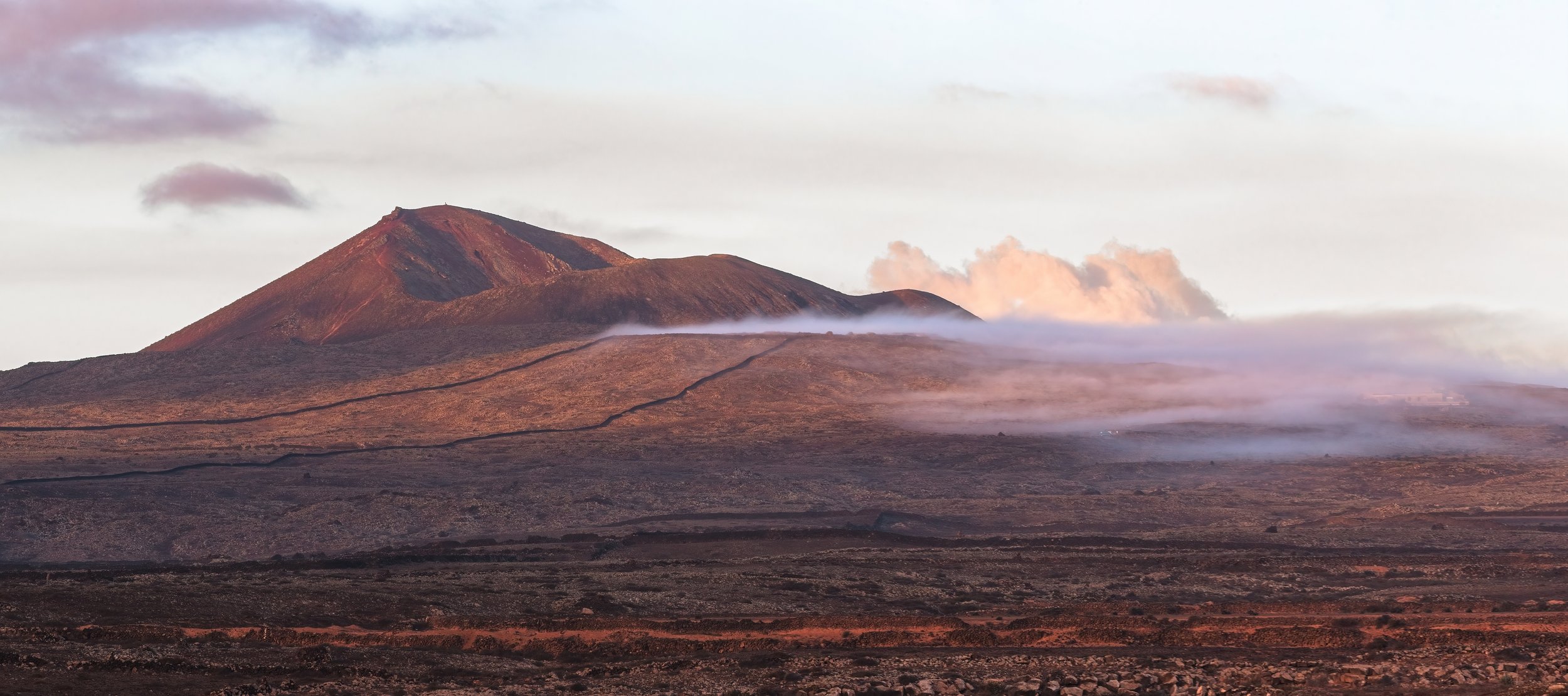
Lanzarote - Islas Canarias
Volcanoes as far as the eye can see, secluded white-plaster surfing villages, garbanzo soup.
Caleta de Famara (Famara Cove town), viewing La Graciosa island.
Scale is amazing. Even on such a small island in a small archipelago, one becomes immediately dwarfed by the landscape at every turn.
Semi-circular walls shield crops across the island from northeasterly trade winds.
Montaña de Tinaguache under the unpolluted night sky is the picture of grandeur. An older, extinct volcano, its caldera is larger and more sunken than those further south.
This island and its neighbors carry a mixed reputation for their concentration of British expats. But whether or not they’re seen as bringing welcome commerce and gentrification, the relocated retirees themselves have found exactly what they are looking for. “I thought I was coming here to die,” one local English shop owner told me, “but here I discovered what it means to live.”
Endless, winding lava tubes are home to the sanctity of deafening stillness and every shade of pitch darkness. To traverse miles under the earth is to connect with a place in the deepest way possible, quite literally.
Jameos — sunken portions of lava tubes — offer unexpected ways in and out of the tunnels.
Although it lacks the lush forests of its canary neighbors, Lanzarote boasts a surprisingly large sample of fauna considering its recent volcanic history. Spanish Sparrows such as this male are highly adaptable denizens of the arid semi-desert and bustling streets of the capital, Arrecife.
Ruddy Turnstones
Canarian Houbara Bustard - an endangered endemic, and the largest native bird here.
Great Gray Shrike
Another Canary endemic, the charismatic Berthelot’s Pipit savors a midday snack.
A baby Rock Pigeon (squab) waits deep in the crags of a jameo for its parents…
…who are busy riding camels meant to carry tourists up a volcano.
Eurasian Kestrels




